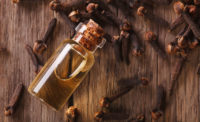Ingredients
The clean-label trend's impact on antioxidant and antimicrobial ingredients
Driven by cleaner labels: The clean-label trend has propelled the use of antioxidant ingredients and had an impact in the antimicrobial ingredient world as well.




The use of antimicrobial and antioxidant ingredients has been growing in recent years for a few reasons. First, the industry is growing with population increases. In addition, consumer interest is shifting to more natural foods, which typically use either fewer antimicrobial and antioxidant ingredients or use ingredients in a different form to provide some of the same functions, says Joseph Sebranek, Charles F. Curtiss Distinguished Professor in agriculture and life sciences in the department of animal science at Iowa State University, in Ames.
The use of antimicrobials also increased along with the regulations to control Listeria in ready-to-eat food products, says Gary Sullivan, assistant professor of meat processing in the department of animal science at the University of Nebraska-Lincoln.
“Many are organic acid salts,” he says. “It was at that time that combination of sodium lactate and sodium diacetate became the most common antimicrobial. Alternatively, to limit sodium, potassium lactate can be used in place of sodium lactate.”
Beyond Listeria control, many of the antimicrobials used can slow microbial spoilage resulting in a longer shelf life. Newer organic acid salts being used are propionic acid (propionate) and benzoic acid (benzoate), Sullivan says.
Antimicrobial and antioxidant seasonings and spices that are particularly growing in the meat and poultry industry are ones that appeal to consumers’ cleaner label concerns.
“There has been more use of spice extracts and more ingredients that provide a better impression to consumers when they read the label,” Sebranek says. “Various forms of vinegar and what is termed ‘cultured sugar’ are good examples of antimicrobials in this category.”
“In response to the clean-label trend, alternatives to lactate/diacetate have been sought,” Sullivan says. “Cultured sugars and buffered vinegars are the most common of these. Different plant extracts are also being researched for antimicrobial and used in combination with other antimicrobials.”
Hard workers
Antioxidants provide flavor protection for many processed meat products. Ingredients such as salt and processing steps such as grinding and cooking increase the rate of lipid oxidation. Sodium nitrite in cured products provides antioxidant activity, and, therefore, most cured meats do not have additional antioxidants added.
“USDA regulations do not allow synthetic antioxidants in cured meats except dry cured sausages,” Sullivan explains. “As with antimicrobials, many processors use plant extracts in place of synthetic antioxidants.”
The most commonly used antioxidant is rosemary extract, followed by green tea or cherry for fresh meat color stability. “These may be used in combination to provide synergistic effects,” Sullivan says. “Many of the plant extracts are able to be listed as natural flavors on the product labels.”
One of the challenges of using antimicrobial and antioxidant ingredients is finding the best form to use to fit the product and to be most effective. For example, dry, liquid, water-soluble or oil-soluble are likely to vary in effectiveness depending on what function is expected, Sebranek says. In addition, sometimes ingredients interact with each other in unexpected ways to affect product quality, such as using an antioxidant to protect flavor, for example, but one that results in discoloration.
“The best way to overcome these challenges is working closely with the suppliers of these products,” Sebranek says.
Adding acidic compounds to meat also can cause reduced functionality of the proteins in processed meats. “Fresh chorizo is an example where vinegar is added intentionally to provide the crumbly texture associated with chorizo,” Sullivan says. “As many of the clean-label antimicrobials contain buffered organic acids, many processors will add these … late in the manufacturing process to minimize protein denaturation from the acid.”
In addition, regulations and price are always challenges when considering new ingredients or new forms, such as extracts and concentrates, Sebranek adds.
Looking to the future
Advancements continue with antimicrobial and antioxidant ingredients. Several academic studies of extracts and various products that have antimicrobial and/or antioxidant properties exist. In the case of spices with antimicrobial or antioxidant potential, however, extracts often retain enough of the flavor components to limit the amounts that can be used in a practical application, because those amounts are often below the concentrations needed for significant antimicrobial/antioxidant impact.
“The focus seems to be on finding things that are more attractive to consumers compared to the traditional preservatives that have been used,” Sebranek says. “Everyone is trying to clean up their labels to make them more attractive.”
“Ingredient suppliers are continually screening new raw materials and microorganism products/byproducts for antimicrobial and antioxidant activity,” he says. “These components that have potential need to be screened for efficacy and applied to products to test efficacy in the final product and determine any impact on processing and quality characteristics. In addition, any promising source must be able to be scaled to production quantities.”
In line with cleaner labels, another area to watch with antimicrobial work going forward is high-pressure processing. While not an antimicrobial ingredient, high-pressure processing is increasing in ready-to-eat meat products to provide Listeria control and shelf-life extension, Sullivan says. NP
Looking for a reprint of this article?
From high-res PDFs to custom plaques, order your copy today!










